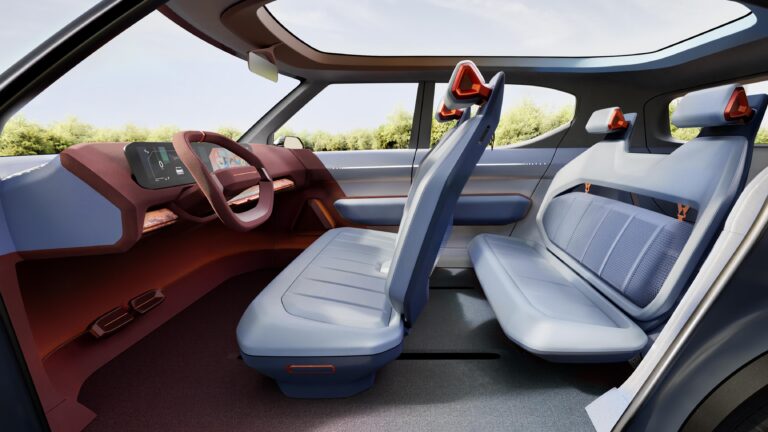Kia has revealed further details of its concept EV2’s interior design, inspired by what it calls ‘picnic in the city’ lifestyle concept.
The EV2 interior has been designed to combine comfort and versatility, using durable, environmentally conscious materials for a user-centric experience. Unveiled at Kia’s EV Day in Barcelona, Spain, in February, the concept EV2 is a B-segment electric SUV.
The inspiration behind the interior
The ‘picnic in the city’ lifestyle concept has seen balconies and terraces serve as the central inspiration for the concept as spaces that are small yet meaningful for relaxation within a busy environment. The concept EV2’s interior has been designed to feel open and seamlessly connected, blending compact dimensions with spacious flexibility, offering a highly functional, environmentally mindful space. This design approach aims to reflect a “balance between everyday practicality and moments of leisure, right in the heart of the city”, the auto maker says.
Kia focused on maximizing the functionality of the first-row space, which is typically the primary space in vehicles of this size. With a flat-floor layout, the second-row seats can be folded up while the front seats can slide back to expand the cabin. Additional side-extendable seat elements expand the cabin further.
The concept EV2 also integrates seat headrest-integrated speakers, portable door speakers, side-extendable seats, detachable seat cushions and pop-up luggage dividers.
Color, materials and finish and alternative materials
The EV2’s interior combines “innovation and responsible design”, Kia says. Its CMF team worked closely with partners to introduce environmentally conscious materials that enhance the driving experience while aiming to reduce environmental impact.
Simplifyber Fybron, a cellulose-based compound made from renewable sources like wood, paper and recycled textiles, was used for the vehicle’s dashboard and door panels. This material reduces waste through a liquid-based process that eliminates the need for weaving or spinning and enhances a user’s tactile experience.
In collaboration with Biomyc, biodegradable mycelium components, including hemp and mycelium-based materials, also feature in the concept EV2’s interior. These parts were cultivated and custom-colored to match Kia’s Pantone shades. Mycelium is a renewable, bio-based material with insulation properties. The materials are grown with attention paid to their environmental impact, with over 180 samples tested to find the optimal combination of coatings, paints and additives.
Two types of mycelium materials are used in the concept vehicle. The first is a mycelium-infused polyurethane (PU), which is applied across the overall light blue surfaces in the interior. Fine brown speckles, mycelium particles, are embedded throughout, to create “natural texture and depth”. The second is a grown volume material, created by mycelium cells that bind cellulose from agricultural waste into a solid structure.
Kia’s collaboration with Bcomp has also introduced AmpliTex, a bio-based composite material made from flax fibers, into key structural components within the cabin, such as the back seat shell and front seat substructures. Replacing conventional synthetic materials significantly reduces the overall weight, improving fuel efficiency while maintaining the strength and robustness required from a lifestyle-focused SUV. The material is fully recyclable and can be broken down and reprocessed into composite pellets for reuse.
Kia’s CMF team has also worked to develop a custom dark-blue finish, adding an aesthetic layer that complements the vehicle’s eco-friendly design without sacrificing visual appeal.
In related news, materials manufacturer Covestro recently introduced a new line of post-consumer recycled (PCR) polycarbonates made from end-of-life automotive headlamps. Click here to read the full story.



